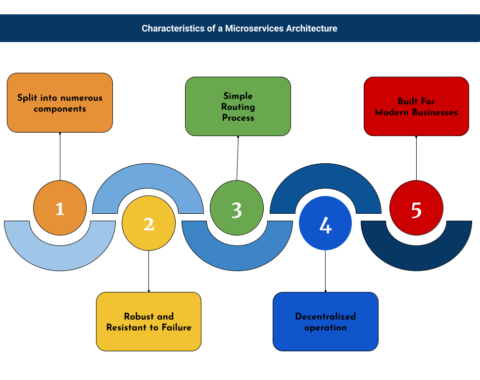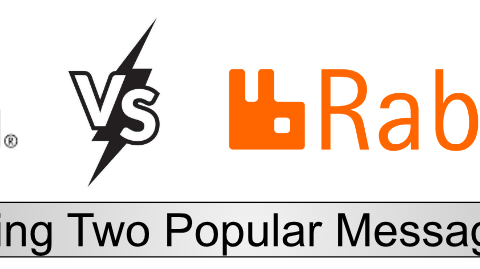An Introduction to MongoDB: A Powerful NoSQL Database.
MongoDB is a popular database management system that belongs to the family of NoSQL databases. It’s renowned for its flexibility, scalability, and ease of use.
MongoDB, an open-source NoSQL database, was developed in 2009. It is known for its scalability, robustness, and cost-free nature. Additionally, MongoDB offers a commercial version.
MongoDB is renowned for its adaptability and versatility as a database, and it currently serves as the backend data store for numerous prominent enterprises and organizations, including Forbes, Facebook, Google, IBM, Twitter, and many others.
MongoDB, in contrast to relational databases, belongs to the realm of non-relational databases. Relational databases, like Microsoft SQL Server, Oracle, and Sybase, employ a relational database management system (RDBMS) to store data in organized columns and rows.
On the other hand, MongoDB, a NoSQL database, stores unstructured and schema-less data in multiple collections and nodes. Unlike traditional databases, NoSQL databases do not rely on fixed table schemas, providing a higher level of flexibility. Additionally, NoSQL databases are designed to be horizontally scalable and can handle limited join queries.
The acronym “NoSQL” represents “Not Only SQL,” emphasizing the fact that these databases provide functionalities beyond conventional SQL-based solutions.
How MongoDB Works ?
Data Structure:
MongoDB stores data in flexible documents using a format similar to JSON (JavaScript Object Notation). Each document can have its own unique structure, allowing for variation in fields and data types.
Collections and Documents:
Data in MongoDB is organized into collections, which are equivalent to tables in relational databases. Collections contain individual documents, akin to rows in a table. However, unlike traditional databases, documents within a collection can have different structures.
Indexing:
Indexing in MongoDB helps improve query performance by creating indexes on document fields. This accelerates the search process, enabling faster data retrieval.
Replication and Sharding:
MongoDB provides replication for data redundancy and fault tolerance. It creates copies of data across multiple servers to ensure availability even in case of hardware failure. Sharding, on the other hand, horizontally partitions data across multiple machines to handle large datasets efficiently.

Key Features of MongoDB
Flexible Data Model
MongoDB’s document-based data model allows for flexibility as it supports various data formats within a single collection.
Scalability
It’s designed for scalability, enabling seamless distribution of data across multiple servers, making it suitable for applications with growing data needs.
High Performance
MongoDB’s architecture, which includes indexing and query optimization, ensures high performance even with large datasets.
Ease of Use:
Its intuitive and user-friendly query language makes it easier for developers to interact with the database.
Replication and High Availability
MongoDB offers replica sets to maintain data redundancy and ensure high availability in case of node failures.
Aggregation Framework
This feature enables the processing of data and performs complex computations within the database.
Use Cases of Mongo DB :
- Content Management: MongoDB’s flexibility makes it ideal for content management systems where content structures may vary widely.
- Real-time Analytics: Its ability to handle large volumes of data and provide high throughput makes MongoDB suitable for real-time analytics applications.
- IoT (Internet of Things): MongoDB’s scalability and ability to manage unstructured data make it a popular choice for IoT applications dealing with diverse data sources.
- Mobile Applications: Its ability to work well with JSON-like documents and support for dynamic schemas make it a good fit for mobile app backends.
| RDBMS | Mongo DB |
| Database | Database |
| Table,View | Collection |
| Tuple/Row | Document (JSON,BSON) |
| Column | Field |
| Table Join | Embedded Documents |
| Primary Key | Primary Key (Default key _id provided by MongoDB itself) |
| Foreign Key | Reference |
| Partition | Shared |
| ACID properties (Atomicity, Consistency, Isolation, and Durability) | CAP theorem (Consistency, Availability, and Partition tolerance) |
| In terms of performance, it is slower than MongoDB. | In terms of performance, it is much faster than RDBMS. |
| Pre-defined schema | Dynamic schema |
Advantages of Mongo DB
- MongoDB is a NoSQL database that operates without a fixed schema. When working with MongoDB, there is no need to design the database schema in advance.
- Unlike traditional relational databases, MongoDB does not support join operations.
- It offers exceptional flexibility when it comes to the fields within the documents.
- The data stored in MongoDB can have varying structures and types, making it suitable for storing heterogeneous data.
- MongoDB excels in terms of performance, availability, and scalability.
- It efficiently supports geospatial operations, making it a reliable choice for applications that require location-based functionalities.
- MongoDB is a document-oriented database, where data is stored in BSON documents.
- Additionally, starting from MongoDB 4.0, it supports multiple document ACID transactions, ensuring data consistency and reliability.
- Unlike SQL databases, MongoDB does not require any SQL injection prevention measures.
- Moreover, it seamlessly integrates with Big Data Hadoop, enabling efficient processing and analysis of large datasets.
Disadvantages of Mongo DB
- The data storage in this system consumes a significant amount of memory.
- The documents have a strict limitation of storing up to 16MB of data.
- Furthermore, the nesting of data in BSON is restricted to a maximum of 100 levels.
Conclusion
MongoDB’s adaptability and performance have made it a favorite among developers working on a wide range of projects. Its robust features and constant evolution in response to user needs make it an exciting space to explore in the world of databases.



